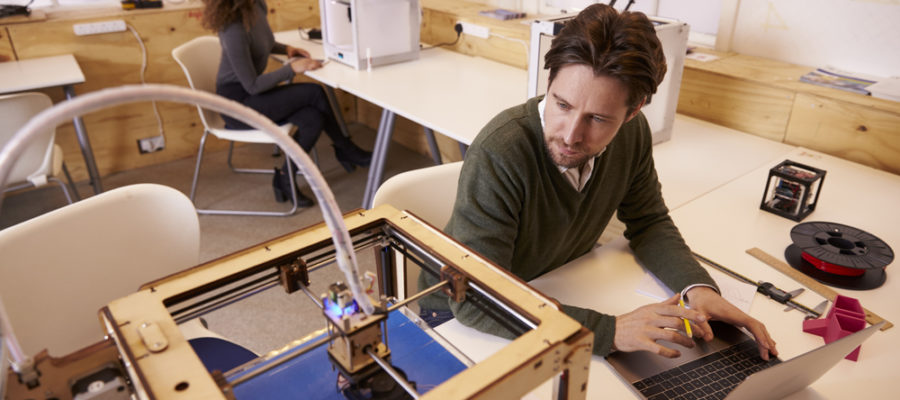Without a prototype as a proof of concept and process in your product development, all your research, design and engineering efforts may be futile. The problem is, considering that prototypes are often one-off, sometimes makeshift precursors to a final part or product, the effort to create them using traditional methods can consume a disproportionate amount of time and resources. Making matters worse, if your prototype doesn’t meet specifications for performance, you are back to square one; except you now have fewer resources and much less time to get your products to market. Luckily, 3D printing can now be used to capitalize on the advantages of rapid prototyping
5 Advantages of 3D Printers for Rapid Prototyping
Enter rapid prototyping. Using 3D printing technology, rapid prototyping fosters a wide range of techniques and prototyping processes that are impossible with conventional prototyping. Designers can create 3D scale models of a part or finished assembly that demonstrates the functioning of the finished product.
- No Need for Prototype Tooling – No prototype tooling is required when using 3D printers for rapid prototyping. There is virtually no limit to the shape and dimension of the prototype parts you create with a 3D printer.
- Get to Market Faster – Getting to market quickly is more crucial than ever. The time savings realized by avoiding the need for prototype tooling and being able to see a scaled or full-size, fully-functional prototype, means you can make revisions to design, production tooling and the overall manufacturing process much faster. Again, the benefit of this versus traditional prototyping grows exponentially in cases where your first prototype must be revised.
- Reduce Prototyping Costs – Rapid prototyping means that prototyping doesn’t need to consume an inordinate portion of your budget. Not only do you need to get to market faster, but investors expect you to do so cost-effectively.
- Greater Visibility – With a realistic, detailed scale model, designers and engineers can make observations that may not have been possible with conventional prototyping. Observations that can lead to innovative solutions and fewer final product defects and returns.
- Mass Customization – Rapid prototyping techniques let you meet individual client requirements for product and performance specifications, which would be time and cost-prohibitive without rapid prototyping.
If you enjoyed this article, check out our recent post about how 3D printing is transforming manufacturing.
